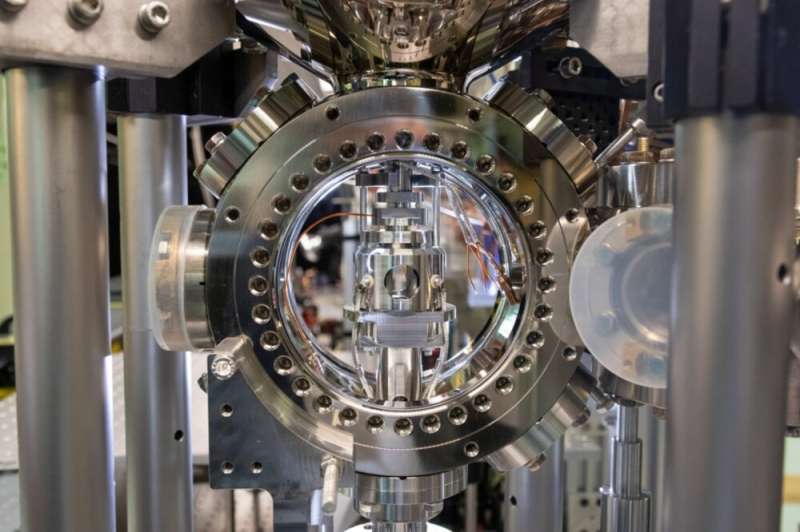Researchers detect a novel binding mechanism between small and gigantic particles

Researchers at the 5th Physical Institute of the University of Stuttgart have verified a novel binding mechanism forming a molecule between a tiny charged particle and a gigantic (in molecular terms) Rydberg atom. The scientists observed the molecule with the help of a self-built ion microscope. The results are published in Nature.
When single particles like atoms and ions bond, molecules emerge. Such bonds between two particles can arise if they have, for example, opposite electrical charges and are hence able to attract each other. The molecule observed at the University of Stuttgart exhibits a special feature: It consists of a positively-charged ion and a neutral atom in a so-called Rydberg state. These Rydberg atoms have grown in size a thousand times compared to typical atoms. As the charge of the ion deforms the Rydberg atom in a very specific way, the bond between the two particles emerges.
To verify and study the molecule, the researchers prepared an ultra-cold rubidium cloud, which was cooled down close to absolute zero at -273 degrees Celsius. Only at these low temperatures is the force between the particles strong enough to form a molecule. In these ultra-cold atomic ensembles, the ionization of single atoms with laser fields prepares the first building block of the molecule—the ion.
Additional laser beams excite a second atom into the Rydberg state. The electric field of the ion deforms this gigantic atom. Interestingly the deformation can be attractive or repulsive depending on the distance between the two particles, letting the binding partners oscillate around an equilibrium distance and inducing the molecular bond. The distance between the binding partners is unusually large and amounts to about a 10th of the thickness of a human hair.
Microscopy with the aid of electric fields
A special ion microscope made this observation possible. It was developed, built and commissioned by the researches at the 5th Physical Institute in close collaboration with the workshops of the University Stuttgart. In contrast to typical microscopes working with light, the device influences the dynamics of charged particles with the help of electrical fields to magnify and image the particles onto a detector. "We could image the free floating molecule and its constituents with this microscope and directly observe and study the alignment of this molecule in our experiment," explains Nicolas Zuber, Ph.D. student at the 5th Physical Institute.
In a next step, the researchers want to study dynamical processes within this unusual molecule. With the help of the microscope, it should be possible to study vibrations and rotations of the molecule. Because of its gigantic size and the weak binding of the molecule, the dynamical processes are slower compared to usual molecules. The research group hopes to gain new and more detailed knowledge about the inner structure of the molecule.
More information: Nicolas Zuber et al, Observation of a molecular bond between ions and Rydberg atoms, Nature (2022). DOI: 10.1038/s41586-022-04577-5
Journal information: Nature
Provided by University of Stuttgart




















